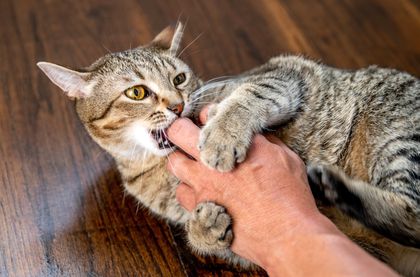
If a Cat Bites Their Owner, Here’s What It Really Means
Cats are fascinating creatures with complex ways of communicating, and one behavior that often puzzles owners is biting. While some bites are playful and harmless, others can be painful or even aggressive. Understanding why your cat bites you is crucial for building a strong bond and ensuring a healthy relationship. In this article, we’ll explore the various reasons behind cat bites, what they mean, and how you can respond appropriately.
Understanding Different Types of Cat Bites
Not all cat bites are the same. The context in which a cat bites determines whether it is a sign of affection, frustration, or a deeper issue. Let’s break down the different types of bites:
- Playful Biting
Kittens and young cats often bite during play. This is a natural behavior they develop while interacting with their littermates. If your cat nibbles on you gently, it could be their way of engaging in playful interaction. However, this can sometimes escalate into rougher biting if they are overly excited.
- Love Bites
Cats sometimes give their owners what is known as “love bites.” These are usually soft, gentle nibbles that occur when a cat is feeling affectionate. It may happen when they are being petted and become overstimulated but still enjoy your presence. Love bites are typically not aggressive and do not break the skin.
- Overstimulation Biting
Have you ever been petting your cat, and suddenly they bite you out of nowhere? This is a classic case of overstimulation. Some cats have a threshold for how much petting they can tolerate before becoming uncomfortable. If you notice their tail flicking or ears flattening before they bite, it’s a sign they’ve had enough.
- Fear or Defensive Biting
When a cat feels threatened, scared, or cornered, they may resort to biting as a form of self-defense. This type of bite is usually quick and accompanied by hissing, growling, or an arched back. Fear-based bites should be taken seriously, as they indicate that your cat is feeling insecure or anxious.
- Pain-Induced Biting
If your cat suddenly starts biting when you touch a specific area of their body, it could be a sign of pain. Cats are experts at hiding discomfort, but biting is sometimes their way of saying, “That hurts!” If this behavior is new, it’s a good idea to have your cat checked by a veterinarian to rule out any underlying medical issues.
- Territorial or Aggressive Biting
Some cats bite as a way of asserting dominance or protecting their territory. This is more common in cats that haven’t been properly socialized or in those experiencing stress due to environmental changes. These bites are usually harder, and the cat may also display aggressive body language, such as puffed-up fur and a rigid stance.
How to Prevent and Manage Cat Biting
While biting is a natural feline behavior, there are ways to reduce unwanted biting and ensure positive interactions with your cat.
- Recognize Early Warning Signs
Cats usually give signals before they bite. Pay attention to their body language, such as tail flicking, flattened ears, or dilated pupils. If you notice these signs, stop petting or interacting with them to prevent overstimulation.
- Redirect Play Biting
If your cat likes to bite during play, provide them with appropriate toys instead of using your hands. Toys like wand teasers, interactive balls, and plush mice help satisfy their hunting instincts without encouraging them to bite you.
- Respect Their Boundaries
Every cat has different tolerance levels for handling. If your cat doesn’t like being petted in certain areas, avoid touching those spots. Let them approach you for affection instead of forcing interactions.
- Use Positive Reinforcement
Reward your cat with treats or praise when they display good behavior. If they bite too hard during play, immediately stop the interaction to teach them that rough biting leads to no more fun.
- Provide a Stress-Free Environment
Cats may bite due to anxiety or territorial stress. Ensure they have a safe space, like a cozy hiding spot or a cat tree, where they can retreat when feeling overwhelmed. If changes in their environment (such as moving homes or introducing a new pet) are causing stress, try gradual introductions and provide extra comfort.
- Seek Professional Help if Necessary
If your cat’s biting is aggressive or becomes a frequent issue, consider consulting a veterinarian or animal behaviorist. They can help identify any underlying causes and provide guidance on behavioral training.
Final Thoughts
Cat bites are a natural part of feline communication, but understanding their meaning can help you strengthen your relationship with your furry friend. Whether it’s a love bite, playful nibble, or a sign of distress, responding appropriately ensures a happy and healthy bond between you and your cat. By recognizing their signals, respecting their boundaries, and providing positive reinforcement, you can minimize biting behavior and enjoy a loving companionship with your feline companion.
